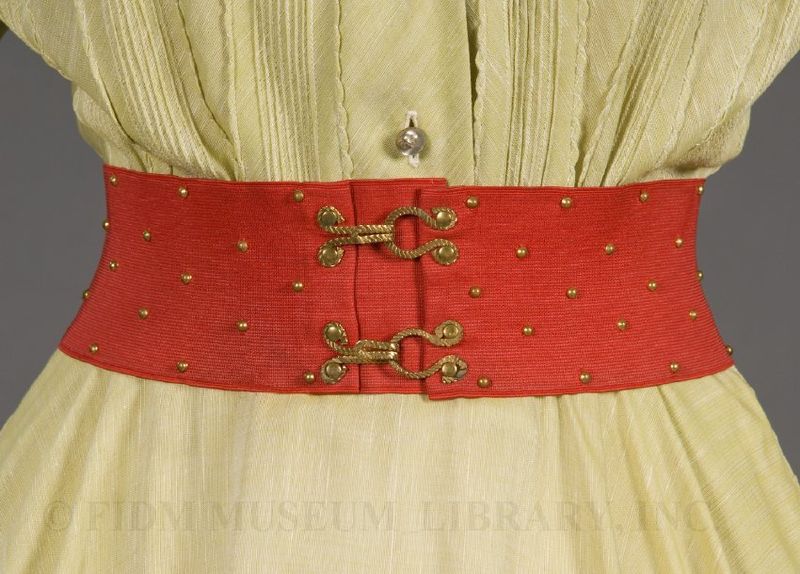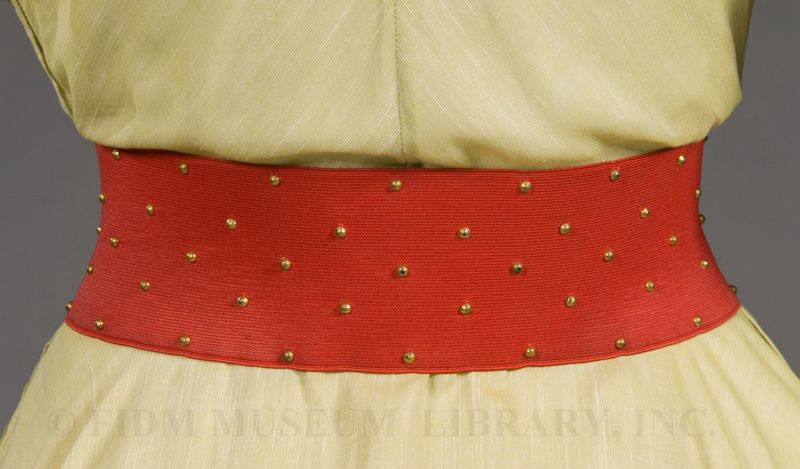Cinch belt
If you happened to see this cinch belt out and about, what would be your guess as to its age? Given that it is part of the FIDM Museum collection, we probably didn't pick it up at H&M over the weekend.
 Cinch belt 1952 Schaffer Anonymous donation 89.10.1
Cinch belt 1952 Schaffer Anonymous donation 89.10.1
Though it looks very much like something that could be purchased today, this elasticized red cinch belt dates to 1952. We are able to give it such a precise date because it was featured in an April 1952 Vogue editorial called "Vogue's Eye View of the Waist Garter." In this case, "waist garter" refers to decorative belts worn on the outside of garments, rather than the form-enforcing undergarment. Both types of "garters" share the purpose of creating a defined, feminine waistline. If you're thinking of the minimal, lacy garter belts seen today, remember that a 1950s garter belt was a more extensive garment, worn to provide both a shapely waist and secure fasteners for stockings. Associated with the designer Claire McCardell, this type of elasticized belt reached the height of its popularity in 1952. McCardell's designs often included an adjustable belt that allowed the wearer some ability to individualize her garment. This was accomplished through adjustable self-fabric ties or by pairing her dresses with belts such as the one seen here. The silhouette created by the cinch belt is a nod to Dior's New Look, which dictated a defined waist and hourglass figure. For some women, wearing a cinch belt would create a similar shape, while eliminating at least some of the rigid undergarments used to create the silhouette.
By 1952, the "slim-line" or "stringbean silhouette" was becoming fashionable. Instead of lauding the hourglass silhouette, the fashion press encouraged women to "cast a shadow of ever narrowing line."1 Though still fitted and dependent on structured undergarments, the stringbean silhouette was intended to suggest more of the actual body underneath the garments. This gradual streamlining would eventually lead to the complete disappearance of the waist in the late 1960s. If you're thinking of the late 1960s shift dress, you're on the right track. You can look forward to seeing some 1960s garments featured on our blog in the next few weeks. In the meantime, keep your eye open for contemporary cinch belts, as you'll see them both on the street and at many retailers.
1 Hayes, Evelyn. "The Line Narrows Down for Fall." The Washington Post 10 Aug. 1952: S3.
